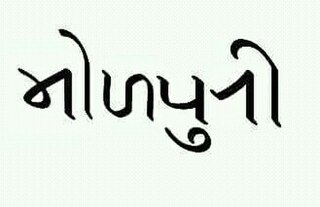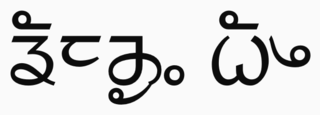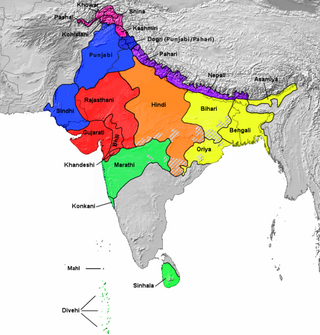 W
WThe 2011 National census lists 123 Nepalese languages spoken as a mother tongue in Nepal. The discovery of six additional languages since then brings the count to 129. Most belong to the Indo-Aryan and Sino-Tibetan language families.
 W
WBhojpuri is an Indo-Aryan language spoken predominantly in the Bhojpur-Purvanchal region of India and the Terai region of Nepal. It is chiefly spoken in western Bihar, eastern Uttar Pradesh, and northwestern Jharkhand. Sociolinguistically, Bhojpuri is often considered one of several Hindi dialects. The language is a minority language in Fiji, Guyana, Mauritius, South Africa, Suriname and Trinidad and Tobago.
 W
WDanwar is a language spoken in parts of Nepal by an Indo-Aryan ethnic group of fifty thousand. It is close to Bote-Darai but otherwise unclassified within the Indo-Aryan languages.
 W
WDoteli, or Dotyali (डोटेली) is an Indo-Aryan language spoken by about 800,000 people, most of whom live in Nepal. It is a dialect of Khas, which is an ancient form of the modern Nepali language, and is written in the Devanagari script. It has official status in Nepal as per Part 1, Section 6 of the Constitution of Nepal 2072 (2015). There are four main dialects of Doteli, namely Baitadeli, Bajhangi Nepali, Darchuli and Doteli. The mutual intelligibility between these dialects is high and all dialects of Doteli are able to share language-based materials.
 W
WThe Eastern Indo-Aryan languages, also known as Māgadhan languages, are spoken throughout the eastern Indian subcontinent, including Bihar, Jharkhand, Bengal, Tripura, Assam, and Odisha; alongside other regions surrounding the northeastern Himalayan corridor. Bengali is official language of Bangladesh and the state of West Bengal and Tripura, while Assamese and Odia are the official languages of Assam and Odisha, respectively. The Eastern Indo-Aryan languages descend from Magadhan Apabhraṃśa and ultimately from Magadhi Prakrit.
 W
WKagate is a language from the subgroup of Tibetic languages spoken by the Kagate people primarily in the Ramechhap district of Nepal.
 W
WKumhali, Kumali, or Kumbale, is an Indo-Aryan language spoken by some of the Kumal people of Nepal. It has 12,000 speakers, out of an ethnic population of 121,000.
 W
WKusunda is a language isolate spoken by a handful of people in western and central Nepal. It has only recently been described in any detail.
 W
WKyirong–Kagate is a subgroup of Tibetic languages spoken primarily in Nepal, with a hundred or so speakers across the border in Tibet.
 W
WLepcha language, or Róng language, is a Himalayish language spoken by the Lepcha people in Sikkim, India and parts of West Bengal, Nepal and Bhutan.
 W
WLhasa Tibetan, or Standard Tibetan, is the Tibetan dialect spoken by educated people of Lhasa, the capital of the Tibetan Autonomous Region of China. It is an official language of the Tibet Autonomous Region.
 W
WLimbu is a Sino-Tibetan language spoken by the Limbu people of eastern Nepal and India as well as expatriate communities in Bhutan. The Limbu refer to themselves as Yakthung and their language as Yakthungpan. Yakthungpan has four main dialects: Phedape, Chhathare, Tambarkhole and Panthare dialects.
 W
WMaithili is an Indo-Aryan language native to the Indian subcontinent, mainly spoken in India and Nepal. In India, it is spoken in the states of Bihar and Jharkhand and is one of the 22 recognised Indian languages. In Nepal, it is spoken in the eastern Terai and is the second most prevalent language of Nepal. Tirhuta was formerly the primary script for written Maithili. Less commonly, it was also written in the local variant of Kaithi. Today it is written in the Devanagari script.
 W
WMarwari, is a Rajasthani language spoken in the Indian state of Rajasthan. Marwari is also found in the neighbouring states of Gujarat and Haryana, some adjacent areas in Eastern Pakistan, and some migrant communities in Nepal. With some 7.8 million or so speakers, it is one of the largest varieties of Rajasthani. Most speakers live in Rajasthan, with a quarter-million in Sindh and a tenth of that number in Nepal. There are two dozen dialects of Marwari.
 W
WMundari (Munɖari) is a Munda language of the Austroasiatic language family spoken by the Munda tribes in eastern Indian states of Jharkhand, Odisha and West Bengal. It is closely related to Santali. Mundari Bani, a script specifically to write Mundari, was invented by Rohidas Singh Nag. It has also been written in the Devanagari, Odia, Bengali, and Latin writing systems.
 W
WNepali is an Indo-Aryan language of the sub-branch of Eastern Pahari. It is the official language of Nepal and one of the 22 scheduled languages of India. Also known by the endonym Khas kura, the language is also called Nepalese, Gorkhali or Parbatiya in some contexts. It is spoken mainly in Nepal and by about a quarter of the population in Bhutan. In India, Nepali has official status in the state of Sikkim and in the Darjeeling District and Kalimpong district of West Bengal. It has a significant number of speakers in the states of Arunachal Pradesh, Assam, Himachal Pradesh, Manipur, Mizoram and Uttarakhand. It is also spoken in Myanmar and by the Nepali diaspora worldwide. Nepali developed in proximity to a number of Indo-Aryan languages, most notably the other Pahari languages and Maithili and shows Sanskrit influence. However, owing to Nepal's location, it has also been influenced by Tibeto-Burman languages. Nepali is mainly differentiated from Central Pahari, both in grammar and vocabulary, by Tibeto-Burman idioms owing to close contact with this language group.
 W
WNewar, known officially in Nepal as Nepal Bhasa, is a Sino-Tibetan language spoken by the Newar people, the indigenous inhabitants of Nepal Mandala, which consists of the Kathmandu Valley and surrounding regions in Nepal. Referal of the language as Newari may be seen as derogatory.
 W
WThe Northern Indo-Aryan languages, also known as Pahāṛi languages, are a group of Indo-Aryan languages spoken in the lower ranges of the Himalayas, from Nepal in the east, through the Indian states of Uttarakhand and Himachal Pradesh, reaching as far west as the Jammu region of Jammu and Kashmir. The name Pahari is Grierson's term.
 W
WNubri is a Tibeto-Burman language spoken by about 2000 ethnically Tibetan people living in Nubri Valley in northern Central Nepal, upper Gorkhā District of Gandaki Province. Nubri has at least three dialects as typified by the Prok, Lho and Sama village varieties. Nubri is largely undocumented and undescribed, with the exception of a lexicon. Nubri is perhaps most closely related to neighbouring Tsum language and the Kyirong variety of Tibetan spoken just across the border in Tibet. It has also been claimed to be closely related to Gyalsumdo. Like these languages it is tonal and shares many Tibetic grammatical features, but is uniquely different in many ways.
 W
WSanskrit is a classical language of South Asia belonging to the Indo-Aryan branch of the Indo-European languages. It arose in South Asia after its predecessor languages had diffused there from the northwest in the late Bronze Age. Sanskrit is the sacred language of Hinduism, the language of classical Hindu philosophy, and of historical texts of Buddhism and Jainism. It was a link language in ancient and medieval South Asia, and upon transmission of Hindu and Buddhist culture to Southeast Asia, East Asia and Central Asia in the early medieval era, it became a language of religion and high culture, and of the political elites in some of these regions. As a result, Sanskrit had a lasting impact on the languages of South Asia, Southeast Asia and East Asia, especially in their formal and learned vocabularies.
 W
WSherpa is a Tibetic language spoken in Nepal and the Indian state of Sikkim, mainly by the Sherpa. The majority speakers of the Sherpa language live in the Khumbu region of Nepal, spanning from the Chinese (Tibetan) border in the east to the Bhotekosi River in the west. About 200,000 speakers live in Nepal, some 20,000 in Sikkim (1997) and some 800 in Tibetan Autonomous Region (1994). Sherpa is a subject-object-verb (SOV) language. Sherpa is predominately a spoken language, although it is occasionally written using either the Devanagari or Tibetan script.
 W
WTamang is a term used to collectively refer to a dialect cluster spoken mainly in Nepal, Sikkim, West Bengal (Darjeeling) and North-Eastern India. It comprises Eastern Tamang, Northwestern Tamang, Southwestern Tamang, Eastern Gorkha Tamang, and Western Tamang. Lexical similarity between Eastern Tamang and other Tamang languages varies between 81% to 63%. For comparison, lexical similarity between Spanish and Portuguese, is estimated at 89%.
 W
WThe Tibetic languages are a cluster of Tibeto-Burman languages descended from Old Tibetan, spoken across the Himalayan Massif in East and South Asia, including the Tibetan Plateau and the Himalayas in Baltistan, Ladakh, Nepal, Sikkim, Bhutan, Assam and Arunachal Pradesh. Classical Tibetan is a major regional literary language, particularly for its use in Buddhist literature.
 W
WYolmo (Hyolmo) or Helambu Sherpa, is a Tibeto-Burman language of the Hyolmo people of Nepal. Yolmo is spoken predominantly in the Helambu and Melamchi valleys in northern Nuwakot District and northwestern Sindhupalchowk District. Dialects are also spoken by smaller populations in Lamjung District and Ilam District and also in Ramecchap District. It is very similar to Kyirong Tibetan and less similar to Standard Tibetan and Sherpa. There are approximately 10,000 Yolmo speakers, although some dialects have larger populations than others.